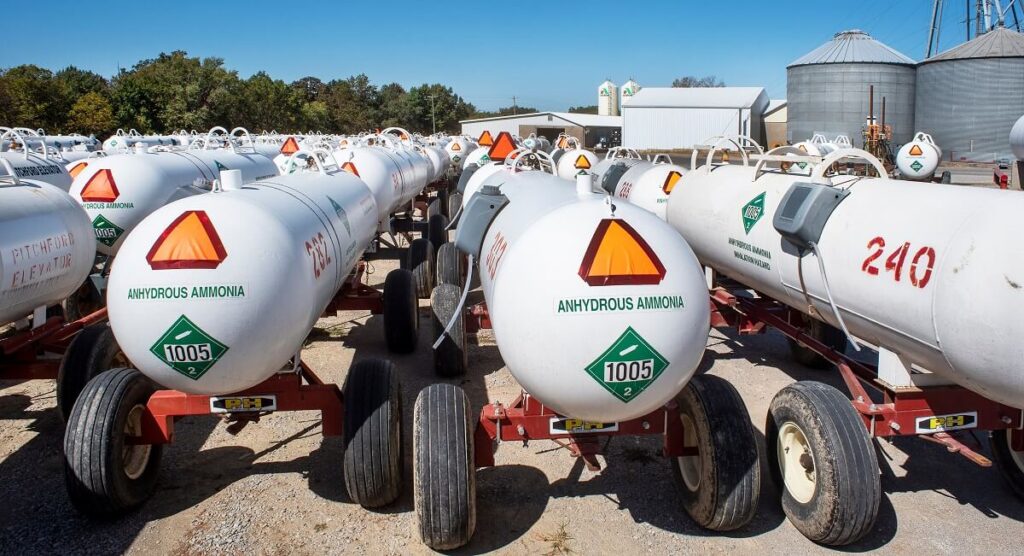What’s Important in an Agrochemical Manufacturer?
- October 25, 2022
- Blog
According to the World Food Programme, 345 million people across 82 countries face acute food insecurity. Without fertilizers and pesticides, many more lives would be at risk.
Miticides, defoliants, desiccants, and other pesticides protect against crop losses that would otherwise be as high as 85%, while fertilizers–including slow- and controlled-release, inorganic, organic, dry, and water-soluble fertilizers–provide vital nutrients for the soil and keep production numbers strong.
In other words, effective, reliable, and safe production of agrochemicals is important.
When you need a manufacturing partner who can be entrusted with such important work, there are a few things to look for in a candidate:
Adherence to Best Practices for Safe Manufacture and Storage
In manufacturing, good safety is good business for at least three reasons.
First, a strong safety program is an indicator of management competence and corporate standards for a chemical contractor.
Second, in our social media-driven world, even loose affiliations with companies who make news for unsafe work environments can damage your reputation by association.
And finally, from a strictly economic perspective, you can’t afford to have business interruptions caused by major accidents.
That’s why having a contract manufacturer who follows best practices for manufacturing and storing fertilizers and hazardous pesticides is paramount. These include:
- Stored in a dry environment separate from other chemicals and away from high-traffic areas.
- Fire suppression and alarm system installed.
- An impermeable floor with secondary containment in the storage area. Clean-up equipment is placed nearby so it’s readily accessible.
- Proper labeling to give firefighters notice about the potential hazards inside during an emergency response to a fire or a spill.
- Temperature control and no direct sources of heat.
Diverse Formulation Capabilities
Farmer demand for better-performing and more eco-friendly products has made agrochemical formulation one of the most difficult branches of chemical manufacturing. Being able to handle features such as…
- oil dispersion
- multi-active ingredients
- microplastic-free encapsulations
- region-specific compatibility
- microbial formulations
- super-concentrations for drone application
…and other agrochemical features takes proficiency in several different forms of chemistry, as well as chemical engineering and material science.
To be able to provide products for today’s marketplace, it’s important that your manufacturer be up to the task.
Regulatory Expertise
The Federal Insecticide, Fungicide, and Rodenticide Act (FIFRA) Section 7 requires all manufacturers engaged in the formulation, packaging, repackaging, labeling and/or relabeling of pesticides, active ingredients, or pesticidal devices to register with the Environmental Protection Agency (EPA) and file an annual production report.
The report must include details about what pesticides have been produced over the preceding 12 months and in what volumes, as well as estimated amounts of each pesticide to be produced during the current year.
Failure to report–even when no pesticides were produced in a given year–could subject your manufacturer to being barred from producing pesticides altogether, interrupting your supply chain and forcing you to scramble to find a new contractor.
What’s more, chemical manufacturers are required by federal law to report any harmful effects they note from a particular pesticide, which means–in addition to having a sound book-keeping process–they must be a) monitoring their products closely enough to note negative effects, and b) ethical.
Find Seatex in the EPA-Registered Pesticide-Producing Establishments database.
Able to Work with Ammonia

According to Chemical and Energy News, roughly half the world’s food production comes from ammonia fertilizer. Some fertilizers require reactions with either aqueous or anhydrous ammonia, which is a toxic chemical that can be a health hazard if inhaled or touched, necessitating workers wearing protective gear and taking special precautions when dealing with it.
As a hazardous chemical, anhydrous ammonia transportation is regulated by the United States Department of Transportation (USDOT) with strict rules for shipping it.
Because of all of this complexity, only select chemical manufacturers are in a position to use this important ingredient in fertilizer production.
See how Seatex is up to the challenge of anhydrous ammonia fertilizer production.
Packaging Prowess
Anyone who’s ever bought fertilizer at the hardware store knows to inspect each bag for tears before purchasing it. Rips in fertilizer bags are typically the top cause of losses for fertilizer producers.
A capable agrochemical manufacturer should be able to package fertilizer in sound packaging, or ship in bulk, without damaging the product through leakage, coagulation, or compaction.
Pesticide producers should similarly be able to count on professional packaging from their contract manufacturer.
This includes proper selection of packaging material that can stand up to the contents without being structurally compromised, a design that’s well-suited to the application by the end-user, and a solid seal to protect against toxic vapors, liquids, or solids seeping out and potentially harming people or the environment.
Seatex is an Experienced Partner for Agrochemical Companies
For crop production or crop protection, micronutrients, specialized nutritionals, adjuvants, and more, we’re ready to do our part to keep the world fed. If you’re looking for turnkey agrochemical help, look no further.









